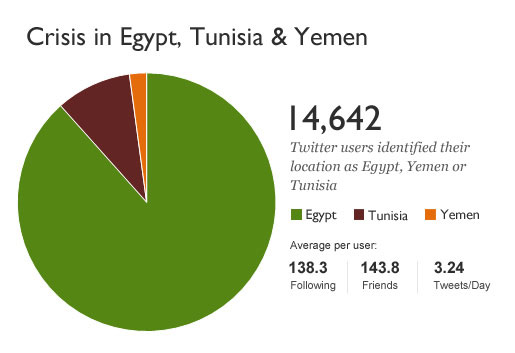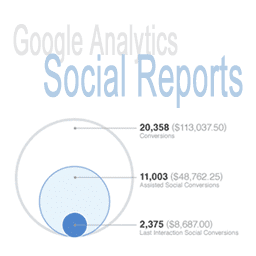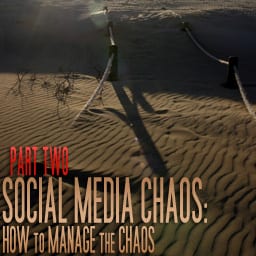Facebook Sun Sinking? Twitter Star Rising?
Here’s today’s Facebook / Twitter riddle: What number do you get when you combine the populations of the states of Oregon, Oklahoma, Connecticut, Kansas, and Kentucky? Answer: Seventeen million, or the number of Americans who use Twitter (Source: ConvinceAndConvert.com).
Granted, proponents of Facebook scoff at the number 17 million; after all, Facebook boasts 500 million users, making 17 million look like a very small number. Meanwhile, social media experts like to complain that despite the number of Twitter accounts, many of them are not considered “active” like Facebook. They are accounts held by people who rarely tweet.  Some have even claimed that Twitter was strictly a 2009 phenomena, and that Twitter is entering a long, slow decline that will eventually lead to its extinction as another internet species that just didn’t work out. (Friendster, anyone?)
Some have even claimed that Twitter was strictly a 2009 phenomena, and that Twitter is entering a long, slow decline that will eventually lead to its extinction as another internet species that just didn’t work out. (Friendster, anyone?)
However, Twitter is paying no attention to the naysayers; it is continuing to grow and continuing to prove itself a relevant part of the social media landscape. As one example of its relevance, residents of Egypt and other countries in the Middle East have been using Twitter to quickly disseminate information about the Egyptian crisis and general political unrest there (Source: Mashable.com).
Twitter naysayers might also be interested to learn that Twitter activity is growing, while Facebook activity is falling off. In recent months, Facebook has faced a 22% drop in time on the site per person, per day. Facebook has also seen a 26% drop in uploaded photos per month (Source: Blog.Hubspot.com).
In February 2010, Twitter hit 50 million tweets per day. In September 2010, that number had risen to 90 million tweets per day. In January 2011, Twitter reached 110 million tweets per day, with 200 million registered accounts.
Twitter’s growth isn’t limited just to the United States, although certainly Twitter usage continues to rise overall in the US (especially in western states – see the Hubspot link above). Just recently, Twitter added Korean to the languages users can tweet in, and as a result they experienced a 3,400% increase in Korean language tweets in 2010 (Source: Forbes.com). Twitter is also rapidly gaining ground in Japan.
New accounts, tweets, and languages aren’t the only signs of growth at Twitter. In an era where even Silicon Valley is experiencing massive layoffs, Twitter actually doubled the number of its employees between December 2009 and December 2010 (Souce: Forbes.com).
The statistics mentioned above aren’t the only ones marketers should pay attention to. Even though they may not be tweeting about it, Twitter users are following brands far more rabidly than any other social media users. Consider that 49% of Twitter users follow companies or brands, but only 16% of social media users overall follow companies/brands. In fact, people using Twitter are three times more likely to follow their favorite brands with Twitter than Facebook users (Source: ConvinceAndConvert.com).
A report by ExactTarget reveals even more interesting differences between Twitter and Facebook users when it comes to interacting with brands. Here are a few of their findings:
• 37% of Twitter users say they are more likely to purchase a brand after becoming a follower, versus 17% of Facebook users
• 33% of Twitter users say they are more likely to recommend a brand after becoming a follower, versus 21% of Facebook users
• 49% of Facebook users said they were not more likely to purchase a brand after becoming a fan, and 47% said they were not more likely to recommend a brand after becoming a fan
• Daily Twitter users were twice as likely to purchase a brand than daily Facebook users
(Source: eMarketer.com)
Twitter may become more popular than Facebook thanks to Smart Phones
Expressing yourself with 140 characters or less is especially convenient when you’re using a phone to do the expressing. With small screens and still maddeningly small letters, not to mention the occasionally annoying predictive text, the less you have to write with a mobile device, the better.
As more and more people turn to their mobile devices, tablet computers, and smart phones as one of their main sources of internet access, expect Twitter usage to grow even more. Already, 63% of Twitter users are accessing social networks through their phones (Source: ConvinceAndConvert.com). Since smart phone sales are expected to dominate the mobile device market in 2011, Twitter is likely to also win big.
Facebook fans: Don’t Leave Twitter Out
Although more than half of Twitter users don’t tweet themselves, this doesn’t mean they’re not reading the tweets of the people or businesses they follow. As the numerous statistics above show, average Twitter users might not be contributing much to the conversation, but they are certainly listening in.
Marketers and business owners should keep this in mind when they consider which social networks they use to actively promote their brands. With Mark Zuckerberg on the cover of Time magazine, it might be easy jump on the Facebook bandwagon and forget about Twitter. Instead, Facebook marketers should reconsider their Twitter strategy and figure out how to get the most out of each 140 characters.






